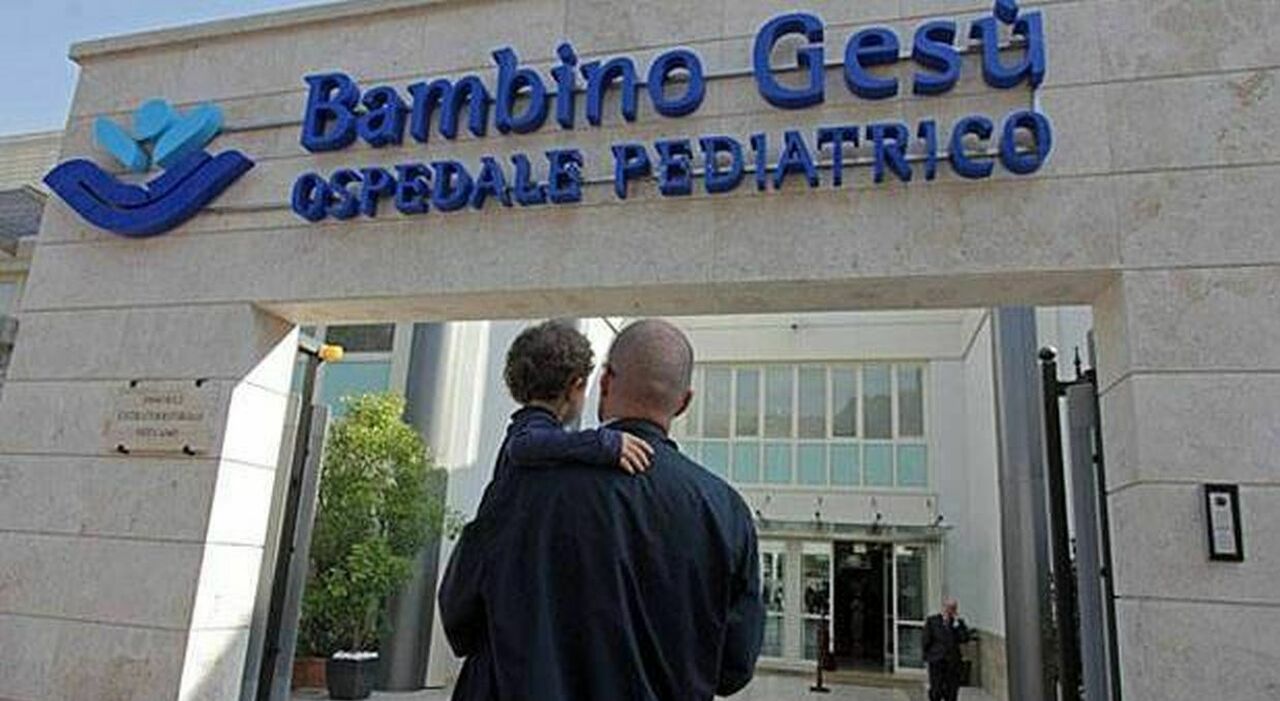Tuesday 6 February 2024, 11:25 - Last updated: 12:17
The little one would not have made it if the doctors had not intervened immediately at birth to allow him to breathe. A huge tumorous mass at the throat - as big as his head - would have indeed prevented him from taking his first breath once he was born. The life of a 37-week-old fetus was saved at the moment of childbirth by a one-of-a-kind intervention, performed while the newborn was still connected to the placenta. The surgeons had a few minutes to extract him from his mother's belly and connect him to the heart-lung machine, before cutting the umbilical cord and completing the cesarean birth. Martina Colombari urgently operated on the abdomen, the video from the hospital: 'The doctors saved me' The life-saving intervention The life-saving procedure, called Exit-to-Ecmo, was performed at the San Pietro Fatebenefratelli Hospital by a multidisciplinary team coordinated by specialists from the Bambino Gesù Pediatric Hospital in Rome. Three days later, the tumorous mass was also removed. Four months later, the child is doing well and has returned home with his family. The baby had developed a benign but 'tumultuous' growth tumorous mass in utero. The tumor, located on the neck, was as big as the small patient's head and had now engulfed the arterial vessels (carotid) and the respiratory tract (trachea). Due to these characteristics, the mass would have prevented the baby from breathing on his own at birth and would have also prevented the doctors from proceeding with intubation or tracheotomy to allow breathing. During pregnancy, the mother was assisted by the Bambino Gesù specialists who followed the evolution of the tumor in the fetus and planned in detail the moment of childbirth preparing for all eventualities. The case The complexity of the little one's case led the medical teams to activate - the first known case in Italy - the Exit-to-Ecmo procedure (Exit aimed at Ecmo) which allowed the newborn not only to survive but also to preserve the normal function of the brain, put at risk by the inability to breathe. The Exit birth consists of partially extracting the fetus from the mother's belly, through a cesarean cut, keeping it connected to the umbilical cord and placenta. This procedure gives the surgeons a short interval of time (about 40-50 minutes), before having to complete the birth. Considering the volume and consistency of the tumor that prevented rapid access to the airways with 'conventional' techniques, the only possibility for the little one was extracorporeal circulation (Ecmo - Extra Corporeal Membrane Oxygenation). The positioning of the heart-lung machine that replaces, from the outside, the respiratory and cardiac function, is a very delicate and complex surgical maneuver: in a very short time, it involves opening the baby's chest (in this case 'in Exit', or not fully born) and inserting within the large blood vessels near the heart two cannulas connected to the machine. After starting extracorporeal circulation, the cesarean birth was completed. A few hours after birth - always with the support of the Ecmo - the baby was transferred to the Bambino Gesù Pediatric Hospital for the preparation for the tumor removal operation. The operation, which lasted about 7 hours, was performed 3 days after the birth. After 4 months of hospitalization, he finally returned home to spend his first Christmas with his family.
© ALL RIGHTS RESERVED
This article is automatically translated
